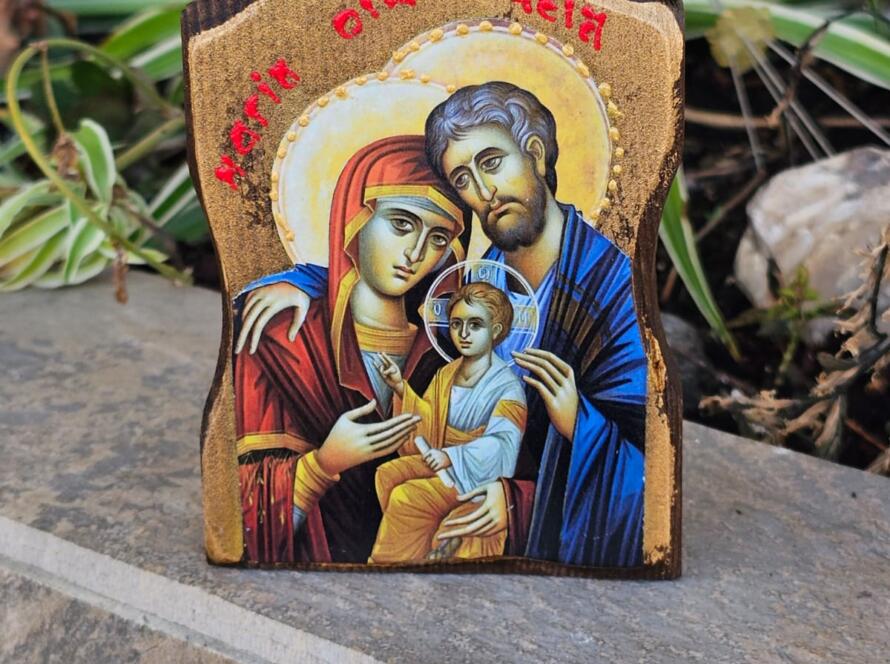Summary
How Many Sects of Christianity Are There?
A Complete Guide to Christian Branches, Denominations, and Why They Exist
How Many Sects of Christianity Are There?
A Complete Guide to Christian Branches, Denominations, and Why They Exist
Introduction — Christianity: One Faith, Thousands of Expressions
Christianity is the largest religion in the world, with over 2.5 billion believers spread across every continent, language, and culture.
Yet no other major religion contains as many distinct groups, traditions, and independent communities.
Some people ask:
-
“How many Christian denominations are there?”
-
“Why are there so many?”
-
“Are they completely different from each other?”
-
“What unites Christians despite the divisions?”
The truth is that Christianity is not a single uniform institution.
It is a global family with deep historical roots, multiple traditions, diverse expressions, and thousands of administrative structures.
In this in-depth guide, we will explore:
-
the three main branches of Christianity
-
the origins of denominations
-
the 30,000–45,000 global Christian groups
-
why so many divisions emerged
-
how Christians remain spiritually united
-
what makes denominations different (and what makes them the same)
This is the full story — from the Apostles to modern megachurches.
1. Christianity Began as One Community — So How Did It Divide?
In the first century, Christianity was simple:
-
small groups of believers
-
meeting in homes
-
led by apostles and elders
-
united in doctrine and mission
-
centered in Jerusalem, Antioch, and Rome
There were no denominations.
Just the Church.
Over time, however, as Christianity spread across thousands of miles and dozens of cultures, differences began to appear:
-
language barriers
-
cultural rituals
-
political influence
-
geographical separation
-
theological disagreements
-
questions about authority
These differences eventually created the branches we have today.
2. The Three Major Branches of Christianity
Though there are thousands of denominations, they all fall under three major global traditions.
1. Roman Catholic Christianity
Size: ~1.3 billion
Founded: First century (claims apostolic authority through Peter)
Head: The Pope
Center: Vatican City
Key Characteristics
-
Strong central authority
-
Seven sacraments
-
Emphasis on the Eucharist
-
Veneration of Mary and the saints
-
Ancient liturgical tradition
-
Global administrative structure
The Catholic Church is the oldest and largest unified Christian body.
2. Eastern Christianity (Orthodox, Oriental Orthodox, Assyrian)
Size: 260–300 million
Founded: First centuries of Christianity
Structure: Independent national churches (Greek, Russian, Serbian, Coptic, etc.)
Key Characteristics
-
Emphasis on ancient liturgy
-
Continuity with early Church tradition
-
Strong monastic life
-
Focus on spiritual transformation (theosis)
-
Sacramental theology similar to Catholicism
Eastern Christians split from Rome in the Great Schism of 1054, mainly over issues of authority and theology.
3. Protestant Christianity
Size: ~900 million
Founded: 16th century Reformation
Structure: Highly diverse, thousands of independent groups
Key Characteristics
-
Authority of Scripture alone (sola scriptura)
-
Salvation by faith alone
-
Local church autonomy
-
Less emphasis on liturgy; more on preaching
-
Wide variety of worship styles
Protestantism quickly expanded into multiple branches:
-
Lutherans
-
Reformed
-
Anglicans
-
Baptists
-
Pentecostals
-
Methodists
-
Presbyterian
-
Non-denominational
This diversity is why most Christian “denominations” belong to Protestantism.
3. So How Many Christian Denominations Exist Today?
Researchers estimate:
Worldwide: 30,000–45,000 Christian denominations
But this number needs careful explanation.
It does not mean 45,000 completely different religions.
It means:
-
administrative groups
-
linguistic divisions
-
cultural variations
-
local independent churches
-
separate governance structures
For example:
There are hundreds of Baptist groups, but all share the same core doctrines.
The actual number of theologically distinct traditions is much smaller —
perhaps 200–300.
4. Why Are There So Many Denominations?
There are five main reasons Christianity contains so many groups.
Reason 1: Geography
Christianity spread across:
-
Europe
-
Africa
-
the Middle East
-
Asia
-
the Americas
Each region developed:
-
local languages
-
cultural styles
-
traditions
-
church leadership
Because ancient travel was slow, churches evolved separately for centuries.
Reason 2: Politics
Political events shaped the Church:
-
The Roman Empire’s fall
-
National identity in Eastern Europe
-
Kings controlling local churches
-
Colonial expansion
-
The rise of modern democracy
Thus churches often became national (e.g., Russian, Greek, Armenian, Ethiopian).
Reason 3: Theology
Believers disagreed over:
-
the nature of Christ
-
the Trinity
-
the authority of the Pope
-
the interpretation of Scripture
-
baptism methods
-
the Eucharist
-
predestination
-
spiritual gifts
These disagreements created major historical splits:
-
Council of Chalcedon (451)
-
Great Schism (1054)
-
Protestant Reformation (1500s)
Reason 4: Revival Movements
Throughout history, spiritual revivals created new groups:
-
Methodism (18th century)
-
Pentecostalism (20th century)
-
Charismatic renewal
-
Evangelical movements
-
Non-denominational churches
These groups formed independently from older structures.
Reason 5: Modern Freedom & Individualism
Especially in the U.S., churches form easily:
-
Anyone can build a congregation
-
Leadership can be local
-
No central authority controls doctrine
This creates thousands of independent churches that count as separate “denominations.”
5. Do All These Denominations Believe the Same Things?
Surprisingly — yes, mostly.
Almost all Christian groups share the same core beliefs:
1. Jesus is the Son of God
2. Jesus died and rose again
3. The Trinity (Father, Son, Holy Spirit)
4. The authority of the Bible
5. Salvation comes through Christ
These are the foundations of Christianity.
The differences are usually about:
-
church structure
-
worship style
-
sacraments
-
role of tradition
-
cultural practices
But the heart of the faith remains the same.
6. What Makes Denominations Different?
Here are the differences that create separate traditions:
1. Authority
Different answers to questions like:
-
Who leads the Church?
-
Do we need bishops?
-
Does the Pope have authority?
-
Can each church make its own decisions?
2. The Bible and Tradition
Some emphasize:
-
Scripture alone (Protestant)
Others emphasize:
-
Scripture + Sacred Tradition (Catholic, Orthodox)
3. Sacraments
Different views on:
-
Baptism (infant vs. adult)
-
Eucharist (literal vs. symbolic vs. spiritual presence)
-
Confession
-
Anointing
4. Worship Style
Liturgical:
-
incense, vestments, ancient prayers
Evangelical:
-
sermons, contemporary music
Pentecostal:
-
spontaneous prayer, prophecy, tongues
Non-denominational:
-
simple, modern, community-driven
5. Culture & Language
African worship looks different from Russian worship.
American evangelical worship looks different from Greek Orthodox liturgy.
7. The Major Families Within Protestantism
Protestant Christianity alone has hundreds of branches.
Here are the main families:
1. Lutheran
Founded by Martin Luther
Emphasis: grace, faith, Scripture
2. Reformed / Calvinist
Predestination, sovereignty of God
3. Anglican / Episcopal
Mix of Catholic liturgy + Protestant theology
4. Methodist
Founded by John Wesley
Emphasis on holiness and personal transformation
5. Baptist
Adult baptism, congregational government
6. Presbyterian
Elders lead the church
Strong teaching tradition
7. Pentecostal
Holy Spirit gifts, healing, tongues
8. Adventist
Sabbath observance, end-times focus
9. Non-Denominational Churches
Independent, modern, fast-growing
Often megachurches
8. Are All These Denominations “Real Christians”?
Most scholars agree:
If a group affirms the core teachings about Jesus, the Trinity, and Scripture, it is Christian.
Differences do not erase shared faith.
But fringe groups that deny core doctrines may be considered outside mainstream Christianity.
9. Will Christianity Ever Unite Again?
Jesus prayed:
“That they may all be one.” (John 17:21)
In many ways, Christians are united:
-
mostly identical core beliefs
-
shared sacraments (in many traditions)
-
cooperation in charity and missions
-
shared Scripture
-
common prayer (the Lord’s Prayer)
Though organizational unity is unlikely, spiritual unity already exists.
Conclusion — Christianity: One Faith, Many Stories
Christianity’s diversity can look chaotic from the outside.
But within it lies a remarkable truth:
Millions of communities express one faith in thousands of cultural languages.
Christianity is global, multi-ethnic, multi-cultural, and dynamic.
-
Catholics preserve ancient tradition
-
Orthodox preserve mystical spirituality
-
Protestants innovate and expand
-
Independent churches adapt to local needs
The diversity does not mean Christianity is fragmented.
It means Christianity is alive.
**One Lord.
One faith.
One story.
Thousands of expressions.**
That is the true picture.





